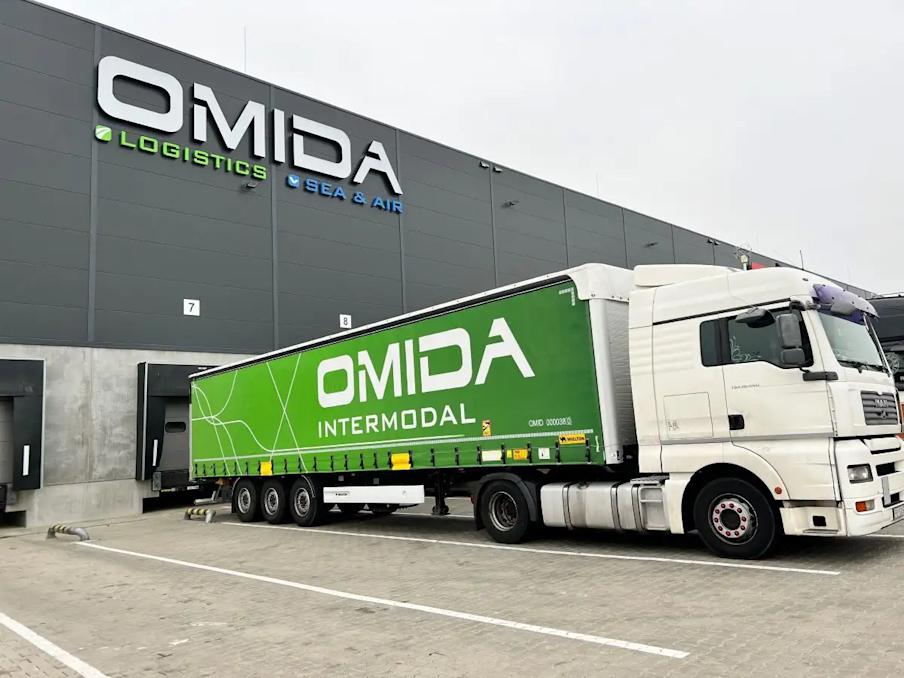Cargo securing in cargo transport is a key element among the aspects related to cargo transport. Proper cargo securing is important both for operational efficiency and to ensure safety for the cargo and those involved in the transport process.
In the TFL industry, securing cargo is an issue that requires special attention, knowledge and experience. Not only does it minimize the risk of damage, loss or delivery delays, but it also has a key impact on trust among customers and carriers.
In this article, you will learn:
-
What are the types of cargo securing and how to prepare for transporting cargo that is secured
-
Which articles of the Road Traffic Law Code speak about cargo securing, and what responsibilities belong to the carrier who is responsible for transporting such cargo
-
How to properly distribute the weight of the cargo on the trailer - why this is so important in the context of planning the transport of cargo
What is cargo security?
Cargo securing in transport refers to the process in which various methods, techniques and measures are used to ensure the safe, stable and properly secured movement of goods during transport. The goal of cargo securing is to minimize the risk of damage, loss, impairment or delivery delays.
In practice, cargo security involves a number of activities, including:
- Packaging: proper packaging of goods is key. Using appropriate packaging materials and providing adequate protective layers protects goods from mechanical damage, moisture or shock.
- Use of safety materials: The use of securing straps, anti-slip materials, air cushions or anti-slip mats ensures stability and immobilization of cargo during transport.
- Use of interlocks: The use of wooden or metal blocking and fastening systems such as locks, buckles or steel cables prevents goods from moving during transport.
- Proper distribution of cargo: The even distribution of cargo inside a vehicle or container is crucial for balance and stability during movement.
- Compliance with regulations and standards: The TFL industry has regulations and standards for securing cargo that must be strictly followed to ensure safe and legal transport.
- Use of technology: Modern solutions such as telematics systems, vibration sensors and GPS monitoring can provide information about transport conditions and help monitor cargo security.
Taking care to ensure that cargo is properly secured is crucial for logistics companies, manufacturers and buyers of goods. It not only ensures the protection of valuable cargo, but also minimizes losses and delays and contributes to the efficiency and effectiveness of supply chains.
Principles of loading and securing cargo
The principles of loading and securing cargo are a key element in road transport and other modes of transport. Correct adherence to these rules is fundamental to ensuring the safe, efficient and compliant movement of goods. Below are the basic rules related to loading and securing cargo:
- Selecting appropriate packaging: Choosing the right packaging, such as cartons, bags, pallets or containers, is a key part of loading. Packaging should be adapted to the types of goods, their size and the specifics of transport. Robust and durable packaging protects cargo from mechanical damage, moisture and weather conditions.
- Even distribution of cargo: Before loading, it is important to properly distribute the cargo in the vehicle or container. Even weight distribution keeps the vehicle balanced, which affects stability while driving. Avoiding extreme loads and taking care of the cargo's center of gravity contribute to ensuring safe transport.
- Use of appropriate securing materials: A variety of materials are used to secure cargo, such as securing straps, cables, nets, anti-slip mats and air cushions. These materials allow the cargo to be rigidly and securely restrained, preventing it from moving during travel.
- Compliance with industry regulations and standards: All cargo loading and securing operations should be carried out in accordance with applicable regulations and industry standards. Many countries have special regulations and guidelines for road transport and cargo securing, compliance with which is mandatory.
- Prevention of cargo movement: Any movement of cargo during transport is undesirable and can lead to damage to the goods and create road safety hazards. Therefore, it is important to prevent cargo shifting through proper security.
- Regular inspections: The condition and security of the cargo should be checked regularly before starting the trip and during transport. It is necessary to carefully fasten and tighten the securing materials to ensure that the cargo remains stable throughout the route.
Ensuring that cargo is properly loaded and secured is a key task for everyone involved in the supply chain. Attention to these principles minimizes the risk of damage to goods, losses, delays and affects the safety of both drivers and other road users.
Principles of cargo securing and types of cargo securing
Principles of cargo securing are of utmost importance in the transport industry, whether by rail, road, sea or air. Correct cargo securing is key to ensuring safety during transport and minimizing the risk of damage to goods, losses or accidents. Below are the most important aspects that accompany the proper securing of transported cargo.
Lashing straps / conveyor belts
Securing straps made of heavy-duty materials such as polyester are used, which are fastened around the goods and clipped to the vehicle or container structure. Securing straps help keep the cargo stable and prevent it from moving during transport.
Lashing strips - mechanical security
Lashing slats, otherwise known as cargo beams or guides, are metal accessories attached to the walls or floor of a vehicle that are used to hold cargo in position. Lashing strips have various types of hooks, lashing hooks or attachment points that allow the cargo to be pinned down flexibly.
With lashing strips, cargo can be solidly restrained, minimizing the risk of goods moving during transport. Lashing strips are often used on trucks, containers and trailers, where they provide stability and security for the goods being transported.
Safety nets
Safety nets, also known as cargo nets, are flexible safety features that are used to protect cargo from moving during transport. The nets are made of durable materials, such as polypropylene and polyester, which ensures their durability and resistance to damage.
Safety nets are used to secure a variety of goods, such as wood, bags of bulk materials, parcels or light goods. The nets are stretched over the cargo and attached to lashing points on transport vehicles. Due to their flexibility, the nets perfectly adapt to the different shapes and sizes of goods, which ensures stability and safety while driving.
Transport chains in cargo transport
Transport chains for securing cargo are special accessories and tools used in the process of securing and immobilizing goods during transport. These chains are made of strong and heavy-duty materials, such as steel, and are used to securely tie down cargo in various modes of transport, such as trucks, trailers, containers or transport platforms.
Chain lashings
Chain lashings, also known as safety chains, are strong and flexible accessories used to secure loads during road transport. They consist of a metal chain of the appropriate length with hooks or lashings on the ends. Chain lashings are attached to various lashing points of the vehicle and cargo, allowing the cargo to be rigidly and securely immobilized during transport.
How to properly secure cargo and take care of security in road transport?
Proper cargo securing in road transport is key to ensuring safe travel, minimizing the risk of damage and danger to other road users. Here are the steps you should take to secure your cargo properly:
1. Preparation: Before loading, carefully plan the securing process. Check regulations and guidelines for securing cargo, and check the load capacity and design of the vehicle to make sure it is suitable for the load being carried.
2. Choosing the right materials: Select the right securing materials, such as securing straps, chains, nets or steel cables. It is a good idea to check that they are suitable for the type of cargo, its weight and dimensions.
3. Even load distribution: Even distribution of cargo in the vehicle is key to maintaining balance and stability while driving. It's worth remembering to place the load weight in the center of the vehicle.
4. Fastening from underneath: Fastening cargo from underneath is more stable and effective than from the top. Make sure the lashing materials are accurately attached to the lashing points on the bottom of the vehicle or container.
5. Checking the tension: Check the tension of the lashing materials so that the cargo is rigidly and securely restrained. A lashing that is too loose can lead to shifting of the cargo during travel.
6. Preventing cargo from shifting: Check that the cargo is stable and does not move during lashing. To do this, it is a good idea to use enough lashing materials to ensure that the goods are secure and rigid.
7. Additional securing: For very heavy or unusual loads, it is a good idea to use additional restraints, such as blocks and wedges, air cushions or anti-slip mats.
8. Regular checks: Check the load as you drive to make sure that the securing materials are still tight and the load remains stable. If you notice any shifting or loose fastening, stop and correct it.
Keep in mind that proper cargo lashing is a key part of safe and efficient road transport.
Road transport - proper load distribution
Proper load distribution in road transport is a key element in ensuring safety, vehicle stability and efficient movement of goods. The process of proper cargo stowage requires careful planning, selection of appropriate safety materials, and compliance with industry regulations and standards.
When deploying cargo, it is also necessary to adapt securing techniques to the types of goods being transported. Some goods may require special securing measures, such as airbags, anti-slip mats or special racks. Attention to detail in the cargo stowage process is crucial to minimize the risk of damage and guarantee safe transport.
It's worth noting that regular checks while in transit are essential to ensure that cargo remains stable and securely restrained. If necessary, the lashing should be adjusted to ensure continued safety and transport efficiency.
Summary
Careful adherence to rules and regulations for proper cargo stowage contributes to professional and safe operations in the transport industry. Lashing goods properly and responsibly is essential to ensure the effective and efficient movement of goods and minimize the risk of accidents or damage. Proper cargo stowage is an integral part of professional logistics, affecting the quality of customer service and the success of a company in the TFL industry. If you have any doubts or questions, feel free to contact our transport company Omida VLS, we will be happy to answer all your questions related to cargo securing when organizing transport.



